Cost of House Insulation
Last updated 10th April, 2025
Rising utility costs mean it’s more important than ever to insulate your home to improve energy efficiency, reduce your bills and make your home more comfortable.
Saving energy not only means paying less for gas and electricity. It also helps you to create a sustainable home that contributes to the protection of our planet and reduces the damage caused by global warming.
In this article, we’ll break down average house insulation costs with prices for the costs of materials and labour for different-sized properties. We tell you about the different types of insulation to help you make the right choice for your budget.
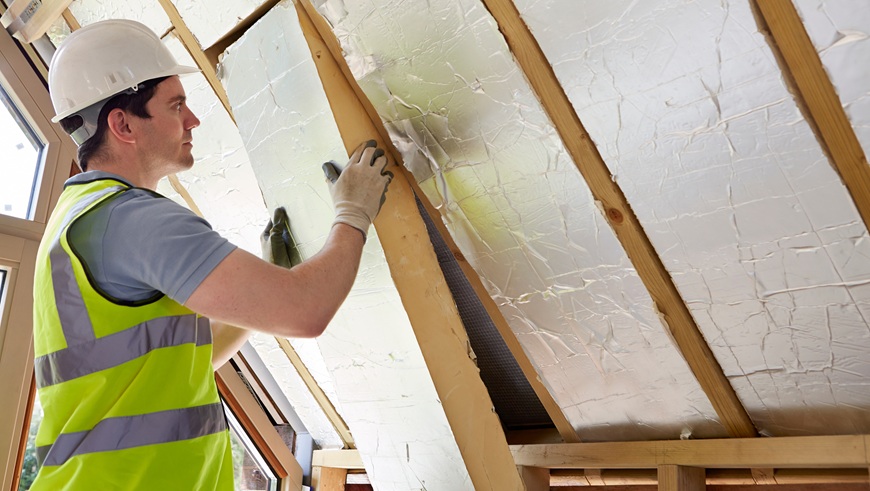
How Much Does House Insulation Cost?
The average cost of home insulation is between £500 and £1,500, depending on the type of insulation, the size of the area and the materials you’re using.
You can insulate:
The Roof and Loft
Most of the heat lost in your home is through the roof space. If you insulate your roof or your loft, you could reduce your heat loss by around 25%. If you don’t have the budget to insulate your roof, then loft insulation is another cost-effective way to reduce heat loss.
The cost to insulate your roof ranges from around £290 to £820 for an area of 20m2, depending on the property size and insulation material.
Loft insulation again depends on the size of the loft and the materials you use. On average, prices range between £850 and £1,250.
The Walls
Wall insulation not only makes your home warmer, but it also prevents damp and mould.
Cavity wall insulation is the most commonly used because the majority of brick-built houses have cavity walls. Cavity wall insulation costs on average between £1,400 and £4,300.
If your home is a non-standard construction and is made with prefabricated concrete, timber or steel frame, then you won’t have cavity walls. In this case, you can insulate your external walls.
The average cost to insulate external walls is between £5,950 and £21,300, depending on the type and size of your property.
Internal walls are cheaper to install. Average costs are between £5,000 and £10,500, depending on the size of your property.
The Floor
Underfloor insulation is placed underneath a suspended timber floor or above a concrete floor in a house that’s already built.
If you plan to have a new floor installed, then you can insulate it under the floor, whether it’s timber, concrete, or stone.
The cost of underfloor insulation depends on the property size, but on average, it ranges between £220 and £700.
Let’s make a start!
Home Insulation Prices
| Area | Cost | Savings |
|---|---|---|
| Roof | £290 - £820 | £270 |
| Loft | £850-£1,250 | £200-£370 |
| Cavity Wall | £1,500-£2,100 | £140-£180 |
| Exterior Wall | £5,950-£21,300 | £190-£240 |
| Interior Wall | £5,000-£8,000 | £190-£240 |
| Underfloor Suspended Timber Floor | £190-£1,400 | £45-£120 |
| Above Floor Concrete | £220-£700 | £45-£120 |
Table of Contents
- How much does it cost to insulate a house?
- Additional costs
- Labour costs and timeframes
- House insulation types
- DIY insulation vs professional installation
- Compliance and regulations for home insulation
- Your energy performance certificate
- Government grants and schemes
- The cost of removing house insulation
- FAQs
Energy Bills and CO2 Savings Information from the Energy Trust
These are the average costs for a professional to install insulation in each property type. Prices may differ if your property is difficult to access, if you need scaffolding, or if you need to remove existing insulation.
There are schemes available for low-income households. If you fit the criteria, you may get all or part of your insulation costs paid through the scheme. Currently, there are two schemes available in England and Wales, one in Scotland and one in Northern Ireland:
- The Great British Insulation Scheme
- ECO4
- Northern Ireland Sustainable Energy Programme (NISEP)
- Warmer-Homes Scotland
- Home Energy Scotland Grant and Loan
How Much Does It Cost to Insulate a House?
Prices to insulate a home vary according to the material you use and the size of your home. Fibreglass, for example, costs on average around £10.00 per m2, whereas polyurethane foam is around £21.00 per m2.
Loft insulation is one of the most common ways to save energy. If you have a tight budget, then insulating your loft is a cost-effective way of saving money on your energy bills.
The cost to insulate a loft in a semi-detached 3-bedroomed home is around £900. Cavity wall insulation for the same type of property is a bigger investment and will cost around £2,650.
Laying 10m2 of floor insulation using glass mineral wool rolls will cost between £190 and £250. If you were to use sheep’s wool, then the cost would increase to between £330 and £450.
You’ll pay more for a larger area. To lay 30m2 of glass mineral wool rolls will cost, on average, between £380 and £500. The same quantity of Sheep’s wool will be between £660 and £900, on average.
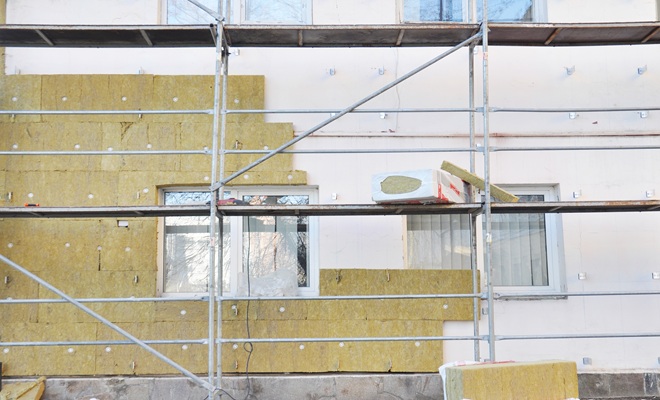
If you are competent at DIY, then insulating the loft or your floor is something you can do yourself, although we always recommend using a professional to reduce errors and provide a guarantee for the work.
If you apply for insulation under one of the government schemes, the work will be carried out by a registered professional.
Even the smallest insulation project will help you save on your energy bill. For example, insulating your water tanks and pipes will cost around £35.00, but you’ll save around £225 a year.
A consideration when choosing home insulation is the amount of time it takes to recoup your investment. Loft and roof insulation lasts around 40 years, but it will have paid for itself within 3 years.
Cavity wall insulation has a payback time of around 5 years, and insulating your floor has a payback period of between 3 and 10 years.
Suppose you want to insulate your home. You would need around £8,000 for the cavity wall, loft and floor insulation. If you have solid wall insulation instead of a cavity wall, then the costs will be around £12,500 for internal solid wall insulation or around £17,000 for external wall insulation.
Additional Costs
When you budget for a home insulation project, there are other costs you might need to consider apart from the labour and materials related to the insulation.
Other costs can include:
Removal of Existing Insulation
Sometimes, you’ll find your existing insulation is too old or damaged to keep. This means it should be removed before you have new insulation installed.
The cost for removing old loft insulation, for example, is around £400 for standard material and £3,000 for spray foam.
Removing cavity wall insulation costs around £20 to £22 per square metre. A typical 3-bedroom home will cost, on average, around £1,600, and a detached home will be in the region of £2,500.
Skip Hire
Hiring a skip might be necessary if you need to get rid of old insulation or if you are renovating parts of your home. The cost of hiring a skip will depend on the size you need, but on average, the cost of a small skip (approximately 30 bin bags) will be between £60 and £130. A large 10-yard skip (approximately 100-plus bin bags) will cost between £180 and £400.
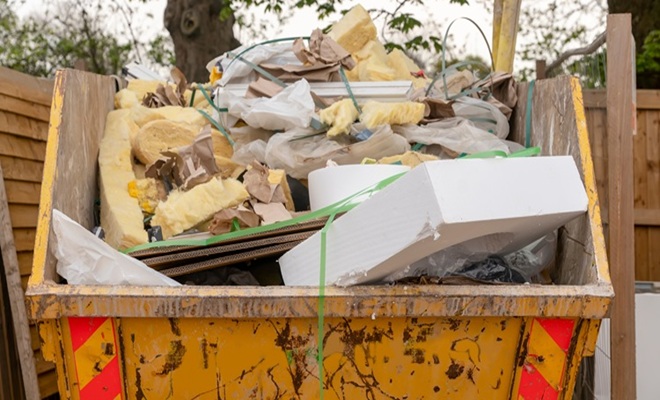
Ventilation System Upgrade
Insulation without adequate ventilation can cause condensation, which in turn produces damp and mould. If you are installing loft insulation, then you should also consider installing roof vents. The cost to install Fascia or Soffit vents to cover 5 metres is between £205 and £215 for materials and labour. Coverage for 10 metres is, on average, between £225 and £275, including labour.
Protective Coatings for External Insulation
Applying a render to your external insulation will protect it from weather and give the exterior of your home an attractive finish. The cost of rendering depends on the size of your property and the material you use. For example, cement render is the most cost-effective at around £10 per square metre. Lime render is the most expensive at around £20 per square metre.
If you have a typical semi-detached property that’s 97m2 and you choose cement render, then the total cost will be around £970. If you choose lime, then the cost will double to around £1,940. Other renders include silicone at £50 per square metre and Acrylic render at £30 per square metre.
Wall Repairs
Insulation shouldn’t be added to walls that are in bad repair. The cost to patch repair a brick wall can cost between £100 and £400. Depending on whether the repair is a small crack, a damp issue, or you need new bricks.
Scaffolding Hire
If you are insulating the upper part of your home, then you may need to hire scaffolding so that the contractors can work at height safely. The weekly cost of hiring scaffolding to access the walls of a semi-detached house is between £750 and £900. Scaffolding for one wall of a terraced house will be between £550 and £700.
Professional Assessment Fees
Some insulation companies will charge to assess your property. This charge might be deducted if you go ahead with the work. On average, the cost of a professional assessment is between £60 and £120.
Depending on your financial position, you may get the cost of the insulation free of charge or with a discount. Each of the schemes in England, Wales, Scotland, and Northern Ireland has detailed information on its website. You can find out online if you meet the criteria for a grant or subsidy, and if you do, you can apply to have a survey carried out at home.
The websites covering the UK are:
- The Great British Insulation Scheme
- ECO4
- Warmer-Homes Scotland
- Northern Ireland Sustainable Energy Programme (NISEP)
Cost Breakdown Calculator
Cavity wall insulation for a 3-bedroom semi - Total Cost: £2,650
Materials
£1590
Labour
£1060
Insulation Removal/Repairs
£0
Labour Costs and Time Frames
It can be easier to hire a professional for home insulation because even if you are good at DIY, you might not have the time or the tools to get the job done within a reasonable time. DIY isn’t recommended for jobs like external wall insulation, which can be complex and may mean working at height.
Some insulation jobs can be labour-intensive, such as solid wall and underfloor insulation. This means labour costs can amount to as much as 50% of the total job price in some cases.
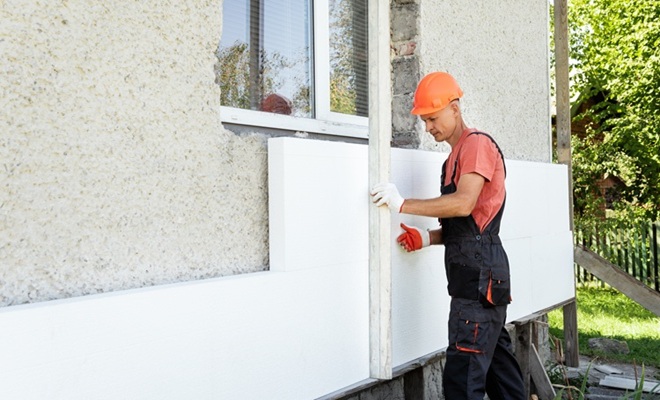
However, jobs like loft and cavity wall insulation don’t normally take very long to complete, so labour costs tend to be lower. Roof insulation may be more expensive because of the nature of the work. Average costs for labour are between £160 and £240 a day. Roof insulation normally takes between 1 and 2 days to complete.
In the charts below, we give you the approximate labour costs, including the amount of time the job should take and the average total cost.
Labour charges can be higher or lower, depending on where you live. For example, prices in the southeast of England and the London area are usually more expensive than in other parts of the UK.
Timescales can be affected by the weather, the ease of access to your property and whether or not you need to carry out repairs or maintenance before the insulation work is carried out.
Insulating House Costs
| Area | Time | Labour £160pd | Labour £240pd | Labour PH |
|---|---|---|---|---|
| Roof | 1-2 Days | £160-£320 | £200-£400 | £20-£30 |
| Loft | 2-4 Hours | £40-£80 | £60-£120 | £20-£30 |
| Cavity Wall | 2-4 Hours | £40-£80 | £60-£120 | £20-£30 |
| Exterior solid Wall | 2-10 Days | £320-£1,600 | £480-£2,400 | £20-£30 |
| Interior Solid Wall | 2-10 Days | £320-£1,600 | £480-£2,400 | £20-£30 |
| Floors | 1-2 Days | £160-£320 | £200-£400 | £20-£30 |
Some installers may charge on an hourly basis for work that takes a short amount of time. However, other installers might charge at least half a day even if the work takes 2 or 3 hours to complete. Costs will be higher if they think there might be access issues or awkward spaces which will take longer to insulate.
House Insulation Types
The type of material you use will depend on what part of your home you are insulating:
Roll/Blanket Insulation
Blanket/roll insulation is one of the most common materials used because it is a cost-effective material, and it’s easy to handle. You can buy rolls of glass, mineral, rock or felt. It is a popular DIY choice.
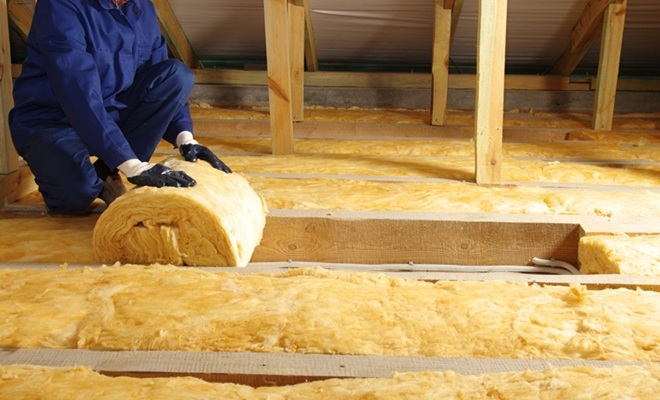
Price: £12 - £27 per m2
Used for: Loft, Wall and Floor Insulation.
Installed: DIY or Professional Installation
Pros
- ✔ Easy to handle, making installation straightforward
- ✔ A budget-friendly option
Cons
- ✖ Some materials can irritate the skin, so protection is needed for installation
- ✖ Can be difficult to fit into tight spaces
Blown-In Insulation
Cellulose is commonly used for this type of application. The material is blown in using an applicator hose. It is an environmentally friendly method of insulation as cellulose is made mostly from paper, which is biodegradable and recyclable.
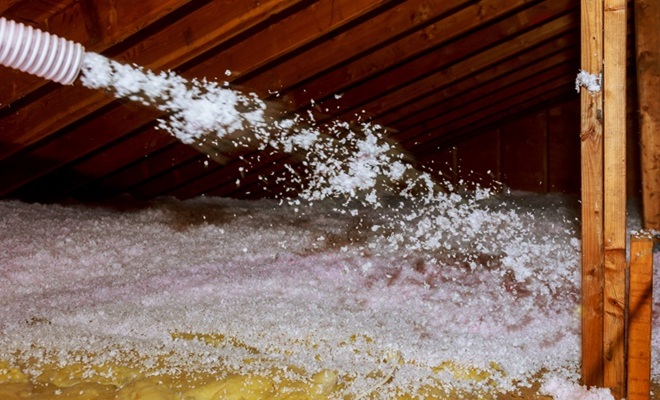
Price: £10 - £12 per m2
Used for: Roof and cavity and Internal walls
Installed: By a professional
Pros
- ✔ Easy to install in awkward spaces
- ✔ Environmentally friendly option
Cons
- ✖ Must have well-sealed roof space to avoid excess moisture
- ✖ It may not be the best choice for cavity walls because of moisture issues
Polystyrene Beads (EPS)
Polystyrene beads are ideal for cavity wall insulation because they resist moisture and mould. It is also a recyclable material, which helps to cut carbon emissions.
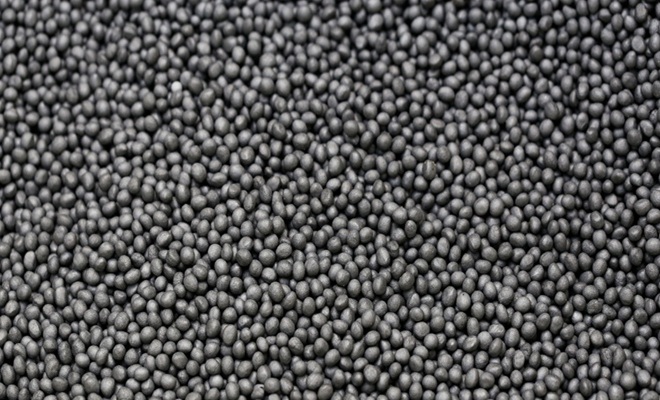
Price: £17 - £22.50 per m2
Used for: Cavity Walls
Installed: Professional Installation by injecting the beads into the cavity space
Pros
- ✔ Moisture and mould resistant
- ✔ Recyclable
Cons
- ✖ Need to be bonded correctly. Weak glue can lead to beads becoming loose
- ✖ Loose beads can create gaps in the insulation
Polyurethane Foam
Spray foam is more expensive than most other insulation types. But it has excellent thermal performance and water resistance.
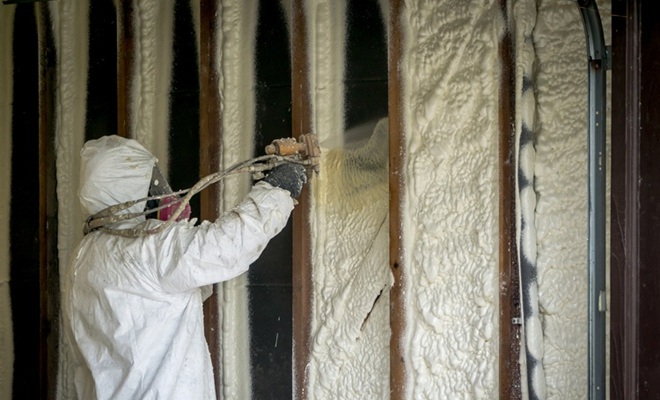
Price: £20 - £22 per m2
Used for: Floor, walls, roof and loft insulation
Installed: Professionally – Installers need to be trained to apply the foam and assessed by the British Board of Agreement (BBA)
Pros
- ✔ Reaches hard-to-access areas
- ✔ It can contribute to soundproofing
Cons
- ✖ Could reduce the value of your property – Spray foam in a property has been known to render a house un-mortgageable. This is because the material is difficult to move once it is in place, and it may present structural issues if used in the roof or loft.
- ✖ May reduce ventilation, which can lead to to damp problems
Type Internal Wall Insulation (IWI)
Internal wall insulation is used on houses with solid walls. Many older homes with solid walls don’t have insulation, and around 30% of heat in the home is lost through the walls. Internal solid wall insulation (IWI) is made up of either insulated plasterboard, which is fixed to the inside of your walls, or a stud wall, which is installed and then filled with insulating material.
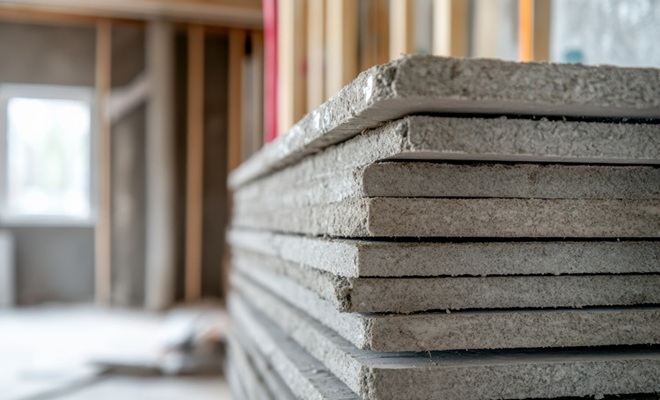
After the installation, you will need to make it look good and decorate it. The average cost for a painter and decorator to paint a room is between £250 and £500, depending on the size of the room, the preparation, and whether woodwork is included.
Price: £10 - £22 per m2
Used for: Internal Wall Insulation
Installed: By a Professional or a person competent at DIY
Pros
- ✔ Approximately half the price of external wall insulation
- ✔ Can increase the value of your home by around 12% to 15%
Cons
- ✖ The installation process is disruptive and labour-intensive. Skirtings, radiators, door frames and wall sockets all need to be removed before installation begins.
- ✖ Room sizes are slightly reduced.
External Wall Insulation (EWI)
External wall insulating boards are fixed to your home’s outside walls, and they are often used to insulate homes that are 100 years old or more and don’t have cavity walls. The installation isn’t cheap, and you will need to pay to have the boards rendered, which adds around £15 per m2 on top of your budget.
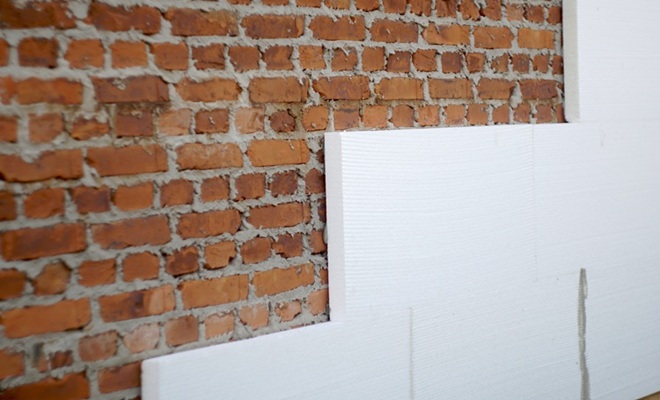
Price: £10 - £22 per m2
Used for: External walls
Installed: Professionally – An installer registered with the Solid Wall Insulation Guarantee Agency (SWIGA) as any solid walls they install are guaranteed for 25 years.
Pros
- ✔ Reduces heat loss by approximately 35%
- ✔ Lowers your carbon footprint
Cons
- ✖ High installation costs (materials and labour on average are around £100 per m2
- ✖ You will need to cover the boards with a coating for aesthetics, which is an extra cost.
Rigid Foam Boards (PIR or EPS)
Rigid foam boards are commonly made from synthetic polymers (PIR) or polystyrene (EPS). They are inexpensive and excellent at retaining heat and resisting moisture.
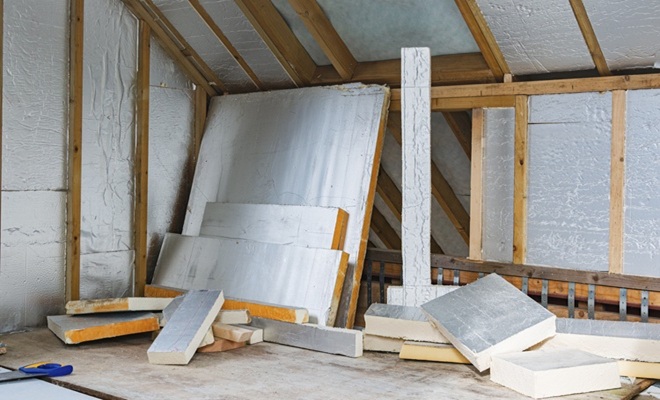
Price: £5.50 - £16 per m2
Used for: Floors, walls, Roof and loft
Installed: Professional or Competent at DIY
Pros
- ✔ Long-lasting and strong
- ✔ Excellent heat retention
Cons
- ✖ Costs more than fibreglass or mineral wool
- ✖ Not an option if you want an environmentally friendly material
Mineral Wool
Mineral wool is one of the most common materials used in many insulation projects, but glass wool is the cheapest option.
Sheep’s wool is the most expensive. It’s a natural product that’s fire-resistant and breathable, which protects timbers from mould.
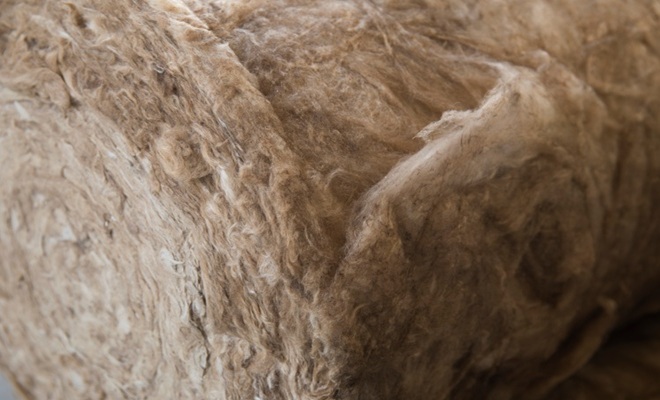
Price: £12 - £27 per m2
Used for: Timber floors, lofts, walls
Installed: Professional and DIY
Pros
- ✔ Fire resistant
- ✔ Cost-effective
Cons
- ✖ Weight can make installation challenging
- ✖ Can be difficult to fit into a tight space
External Wall Insulation (EWI)
External wall insulating boards are fixed to your home’s outside walls, and they are often used to insulate homes that are 100 years old or more and don’t have cavity walls. The installation isn’t cheap, and you will need to pay to have the boards rendered, which adds around £15 per m2 on top of your budget.
Price: £10 - £22 per m2
Used for: External walls
Installed: Professionally – An installer registered with the Solid Wall Insulation Guarantee Agency (SWIGA) as any solid walls they install are guaranteed for 25 years.
Pros
- ✔ Reduces heat loss by approximately 35%
- ✔ Lowers your carbon footprint
Cons
- ✖ High installation costs (materials and labour on average are around £100 per m2
- ✖ You will need to cover the boards with a coating for aesthetics, which is an extra cost.
Fibreglass
Fibreglass is made from tiny glass fibres and is commonly made from recycled glass. It is one of the most affordable insulation materials, although it can be challenging to install because the fibres can cause breathing problems and skin rashes.
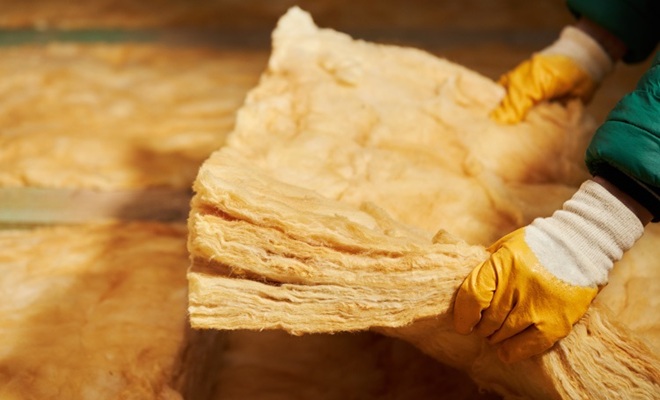
Price: £9 - £11 per m2
Used for: Walls, lofts, roofs
Installed: Professional or DIY
Pros
- ✔ Easy to fit into awkward spaces
- ✔ Cheap to install
Cons
- ✖ Challenging to handle
- ✖ Needs a thickness of 270mm or more to be effective
DIY Insulation vs Professional Installation
DIY Home Insulation
Loft insulation is often carried out by DIY enthusiasts. Roll and blanket material is easy to handle, and you don’t need specialist equipment. However, your work isn’t guaranteed.
Mineral wool and fibreglass are popular choices for DIY insulation projects. Loft insulation using Rigid Foam Boards can also be carried out as a DIY job, as installing them is fairly straightforward.
Tools and equipment for DIY loft insulation include:
- Safety Goggles
- Gloves
- Dust Mask
- Screwdriver
- Panel Saw
- Scissors
- Serrated edged knife
- Tape Measure
Common mistakes made with DIY insulation include lack of preparation. If you come across damp or cracked joists during the installation, you will have to stop so that you can have the issues dealt with by a professional.
Another mistake is ignoring building regulations. Check with your local authority if you need to install ventilation or require specific U-values.
Finally, make sure the insulation is fitted correctly using the appropriate measurements. The insulation won’t be as effective if there are gaps.
Some insulation materials can cause skin irritation and breathing difficulties. Always wear protective clothing, including gloves, goggles and a dust mask.
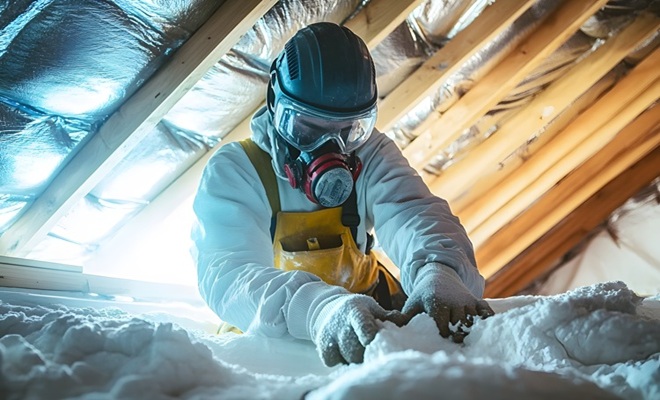
Professional Home Installation
Cavity wall and solid wall insulation should be carried out by a trained professional. Foam, for example, needs to be applied using special equipment and may contain toxins which are harmful to inhale.
Foam installers should be registered with the British Board of Agreement (BBA) to demonstrate their competence so that their work is guaranteed.
Other trade associations like CIGA, the British Urethane Foam Contractors Association (BUFCA) and Qualitymark also offer warranty protection or insurance-backed guarantees. Work funded by ECO may offer a BUFCA warranty, which will protect you if the insulation is faulty and the installers are no longer trading.
If you choose to install your own insulation, you will, of course, save the costs of labour. Typical labour costs for the installation of blanket insulation are between £150 and £200. If you are installing floor insulation, you will save between £800 and £1,100.
Compliance and Regulations for Home Insulation
Planning permission isn’t usually required for home insulation unless you live in a listed building or a conservation area.
External wall insulation may need planning permission if you intend to significantly change your home’s appearance. However, most external wall insulation is covered with a render that is similar in appearance to the original property and, therefore, won’t require planning permission.
Roof insulation may need planning permission if, by installing insulation, you need to increase the height of your roof.
We recommend you check with your local planning department before you start any installation work.
Insulation projects are, however, subject to building regulations:
U-Values – The U value is the measurement of the efficiency of your insulation. A lower U-value is better than a higher value. The recommended U-values depend on where in your home you are installing insulation and if the insulation is for a new build or an older property.
Building regulations recommend the following U-values for insulation. If they can’t be met, then you should try to achieve the best U-rating possible without going beyond the Threshold U-values.
| Insulation Area | Recommended U-Value | U-Value Threshold |
|---|---|---|
| Roof | 0.16 W/m2K | 0.35 W/m2K |
| Floors | 0.25 W/m2K | 0.70 W/m2K |
| Cavity Wall | 0.55 W/m2K | 0.70 W/m2K |
| Solid Wall External or Internal | 0.30 W/m2K | 0.70 W/m2K |
Thickness Requirements of Insulation Material
These are the recommended insulation thicknesses for each type of insulation:
| Insulation Area | Recommended Thickness |
|---|---|
| Roof | 270mm |
| Floors | 150mm |
| Cavity Wall | 140mm |
| Solid Wall External or Internal | 100mm |
Another consideration will be fire safety. You can buy fire-resistant materials for insulation, and if not, you can apply treatment to make them fire-resistant.
Finally, your home should also contain adequate ventilation to restrict damp and mould and prevent structural damage.
Your Energy Performance Certificate
Good home insulation will reduce the heat loss from your home and improve your energy consumption. This will lead to lower energy bills and a better Energy Performance Certificate (EPC) rating.
If you want to sell or rent out your home, you will need to produce an EPS. It rates the energy efficiency of your home and could help you highlight where improvements need to be made.
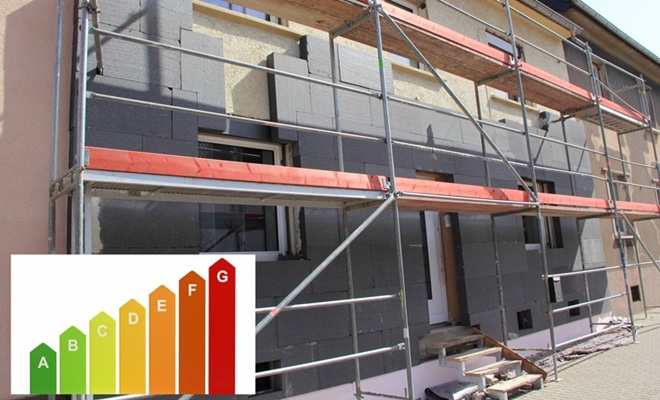
A certificate is valid for 10 years, and the ratings are from A to G. A is the best rating, but the average rating for homes in England and Wales is D.
You can apply for an EPC through an accredited assessor. You can find an assessor in England, Wales and Northern Ireland on the GOV.UK Website. In Scotland, there is an EPC Register.
The cost of a certificate is between £60 and £120. If you try to sell or rent out your home without a certificate, you could be liable for a fixed penalty charge of £200.
Government Grants and Schemes
England and Wales:
These government grants and schemes are available until 31st March 2026.
Northern Ireland:
This scheme has been extended from April 2025 to March 2027.
These schemes appear to be ongoing in each financial year.
The Cost of Removing House Insulation
If your current insulation isn’t up to standard or it’s damaged, you may want to remove it before having new insulation installed.
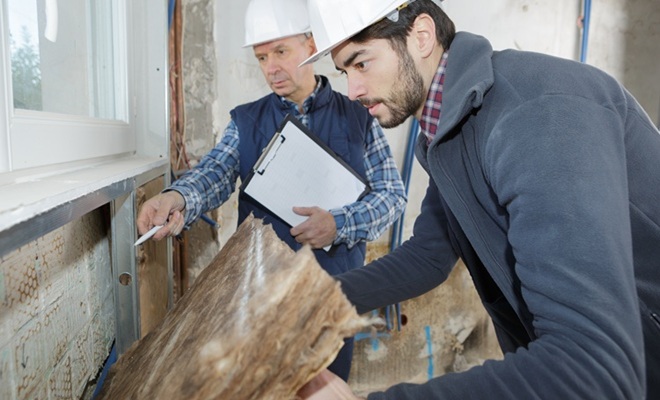
Existing insulation
It also might be necessary to remove old cavity wall insulation if Urea-formaldehyde was previously installed. This type of material was once a popular choice for cavity walls. However, it has been discovered that over time, it is prone to shrinkage. As it shrinks, it releases the toxic chemical formaldehyde gas.
Removing it from your walls is done by vacuuming the dust from the wall cavity. You might be advised to leave your home while the work is carried out because all ventilation routes have to be sealed to stop the dust from spreading around your home.
This is a specialist removal, and therefore, costs will vary and are likely to be higher than standard insulation removal.
A typical loft insulation removal might cost in the region of £400 at around £21 per m2. If you have spray foam, the cost will be higher because removal is more difficult. You could pay around £3,000 or more.
If you want to save money, you can remove some insulation material as a DIY job. If your loft has blanket or rolled insulation or your floors have rigid boards, then it shouldn’t be difficult to remove yourself. You could save between £250 and £300. You will need to budget for skip hire at around £250 per week to dispose of the old insulation.
FAQs
Another option is to use PIR or EPS boards, which have high heat-retaining capacity and will provide better insulation than mineral wool. Costs range between £5.50 and £16 per m2.
You could also use blown-in material, which is made from cellulose, mineral wool or fibreglass. Costs on average are between £10 and £18 per m2.
If you have Urea-formaldehyde insulation, then you may want to get it removed because of its toxic particles.
You can also have it treated by asbestos encapsulation. This protective measure sprays the asbestos with a resin coating that usually lasts around 25 years. The cost of materials and labour is around £8 per m2.
If, however, you want it removed, it is important to hire a specialist who has a license from the Health and Safety Executive (HSE) and Environment Agency. Asbestos removal costs around £50 per m2. A typical asbestos removal from your roof will take between 2 and 3 weeks and cost around £2,500.
The R-value is a measure of how resistant it is to heat loss. A high R-value means it is efficient at resisting heat loss.
Finding and Hiring a Professional
A well-insulated home can increase its value, lower your bills and make you more comfortable. To ensure that the insulation is effective, it needs to be installed properly. Simple installations can be done on a DIY basis, but some insulation can only be installed by a professional.
If you want a guarantee or warranty, then you will need to use a professional installer who is registered with a trade association. A trade-registered insulation installer is able to demonstrate their credibility and competence through the trade association.
Look for professionals who are members of the National Insulation Association (NIA) or the Cavity Insulation Guarantee Agency (CIGA).
You can find a tradesperson by talking to friends and colleagues who might have recommendations. Websites likeTrustmark, which is a government-endorsed quality scheme.
Online directories like Price Your Job and My Job Quote can help you find reliable tradespeople in your area.
Try to get at least 3 separate quotes from insulation installers as that will help you to obtain a fair price for the job.
Ask each contractor the same questions so that you can compare answers. Ask the contractor to put these in writing with their quote, either on paper or by email.
Recommended questions are:
- Do you have up-to-date public liability insurance, and if the contractor has staff, what is the employer’s liability?
- Do you have a website or recommendations from previous customers?
- How long have you been installing home insulation?
- Is your work guaranteed?
- Are you registered with the Competent Persons Scheme?
Some solid wall insulation will require an inspection by a building control officer. If you don’t want to pay for a building control officer to inspect the work, then you should look for an installer registered with the Competent Person Scheme as this means the work can be self-certified by the contractor and won’t need a building control inspection.








